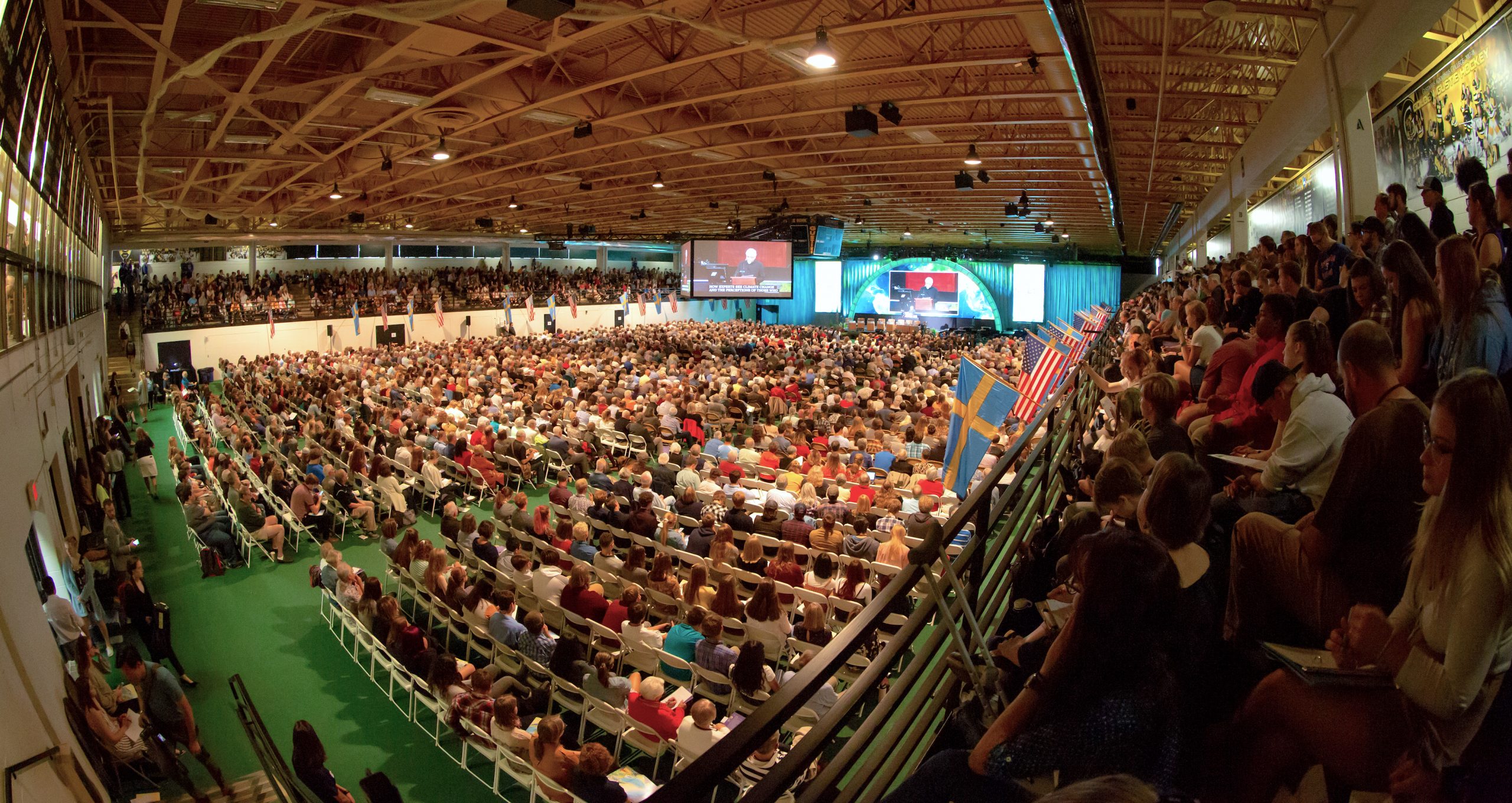“Climate change is not a belief system,” said Dr. Gabriele Hegerl to a sold-out campus crowd and more online around the world. A Fellow of the Royal Society who published some of the first studies detecting the influence of humans on surface temperatures, her sentiment permeated throughout as scientists and experts gathered for the Nobel Conference 55, Climate Changed: Facing Our Future.
What is climate change, then? In the manner in which the Nobel Conference considers a topic, climate change was examined in multitudinous, multidisciplinary ways—as scientific fact, human-created phenomenon, current humanitarian crisis, future cause of wars, the result of Western imperialism and consumerism, and evidence of our lost connection with our Earth and with our souls. It was explored through music (from the Gustavus’ Wind Orchestra, Wind Symphony, Symphony Orchestra, and Jazz Ensemble), dance (including a student-created piece performed on a melting block of ice), visual art (works from the Dustbowl era, works with fungi and plastic as mediums, and a piece about glaciers that engaged all five senses), small group and self-guided learning, and a student-planned, carbon-friendly menu prepared by Gustavus Dining Service.
A variety of voices across countries, continents, disciplines, generations, and world views weighed in on the science of climate change and its ethical concerns. Indian novelist Amitav Ghosh opened the Conference with a lecture on the rhetorical “war on climate change.” “What migrants know is that climate change already is a war. And that what leaders do is more important than what they say in public.” The speakers all agreed that the ethics of geopolitics around climate change currently present a dizzying web of complexity. Dr. Richard Alley, professor of geosciences at the Pennsylvania State University whose work focuses on climate reconstructions through polar ice, delivered a pithy long view: “What keeps screaming at us from history, if you were to compress it down to a couple of tweets, is that carbon dioxide is a big deal,” he said. “The next big tipping point comes from us humans.” Dr. Diana Liverman, Regents Professor of Geography and Development at University of Arizona, showed how progress that has eradicated world poverty has led to an increase in C02 emissions. “In many areas, rising incomes correlate with a rise in consumption,” she said. But, she notes, “There are synergies” that are good for both people and climate. For instance, more plant-based diets and resilient, sustainable food systems.
On day two, Canadian Inuit activist and author Sheila Watt-Cloutier, raised within an Arctic food and culture system that is rapidly melting away, spoke of the connection between environment, economy, human rights, and foreign policy. These interlocked forces shape who wins and who loses as our climate changes via human action. Her people are losing—with the highest rate of suicide in North America, a dramatic increase in diabetes and substance abuse, and increased reliance on imports instead of the Arctic itself. “At issue is our very ability and right to exist as indigenous people,” she says. “We, the Inuit, are the collateral damage.” Dr. Gabriele Hegerl followed up Watt-Cloutier’s human experience with explanations of how climate modeling makes accurate predictions about how our climate will respond to certain factors. The climate models have shown and continue to show what the Inuit experience and will continue to experience.
Climate engineer Dr. David Keith, professor of applied physics at the Harvard School of Engineering and applied sciences and professor of public policy at the Harvard Kennedy School, opened his talk with some good news: “The sudden decrease in the cost of solar power is unexpected and fantastic,” he said. Then, the dark news: “If we just bring fossil fuel emissions to zero, we stop the problem from getting worse. That’s an unusual definition of ‘solved.’” He has an unorthodox solution: solar geoengineering through capturing atmospheric carbon dioxide to make carbon-neutral hydrocarbon fuels. It is, he admits, potentially dangerous—and full of possibility.
“We live in a Kafka-esque world,” said Dr. Mike Hulme. Climate change conversation is complex, disorienting, and often menacing. The professor of human geography and Fellow of Pembroke College, University of Cambridge, offered the humanities as ways to get to the heart of it all. The powers of narrative and metaphor, he says, are as equally important as the power of metrics. “Science on its own offers no moral vision. A well-ordered physical climate is deeply contingent on a well-ordered social world,” he said. The speakers debated this point with fervor as the conference closed: Metrics are the only thing governments listen to in Western and global culture. Lack of conversation on values when presenting climate change science has been detrimental to the science. If we have to build a moral understanding before we take action, are we too late?
“It all now rests on the young people,” said novelist Amitav Ghosh.
“I want to stop dumping this on youth,” said Dr. Diana Liverman. “I’m still alive and I should be doing something.”
Watch the archive video of the lectures and panel discussions, at the Nobel Conference website.

Leave a Reply
You must be logged in to post a comment.